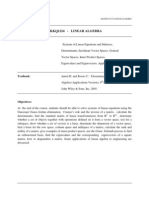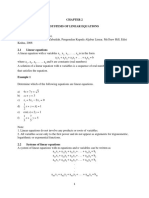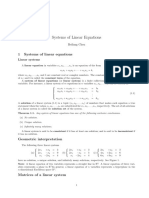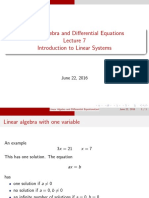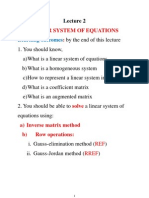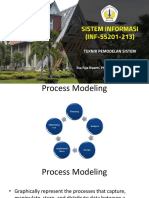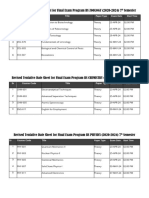0% found this document useful (0 votes)
26 views31 pagesSystem of Linear Equations and Matrices
The document provides an overview of systems of linear equations and their representation using matrices. It explains the definitions of linear equations, the types of solutions (unique, none, or many), and introduces the Gauss-Jordan elimination method for solving these systems. Additionally, it includes examples demonstrating the application of these concepts in solving linear equations.
Uploaded by
galaponangelicajane709Copyright
© © All Rights Reserved
We take content rights seriously. If you suspect this is your content, claim it here.
Available Formats
Download as PDF, TXT or read online on Scribd
0% found this document useful (0 votes)
26 views31 pagesSystem of Linear Equations and Matrices
The document provides an overview of systems of linear equations and their representation using matrices. It explains the definitions of linear equations, the types of solutions (unique, none, or many), and introduces the Gauss-Jordan elimination method for solving these systems. Additionally, it includes examples demonstrating the application of these concepts in solving linear equations.
Uploaded by
galaponangelicajane709Copyright
© © All Rights Reserved
We take content rights seriously. If you suspect this is your content, claim it here.
Available Formats
Download as PDF, TXT or read online on Scribd
/ 31





